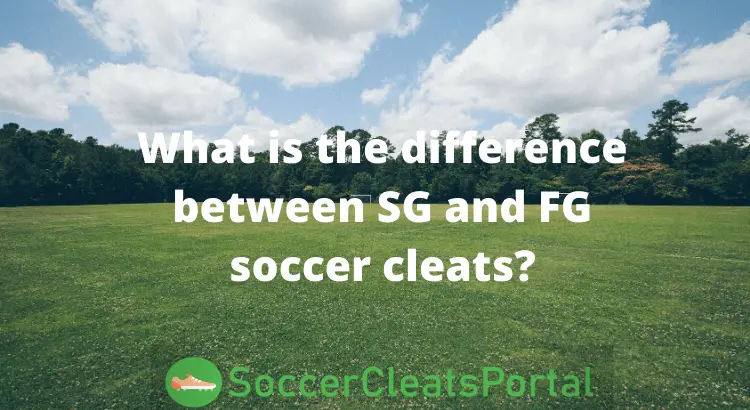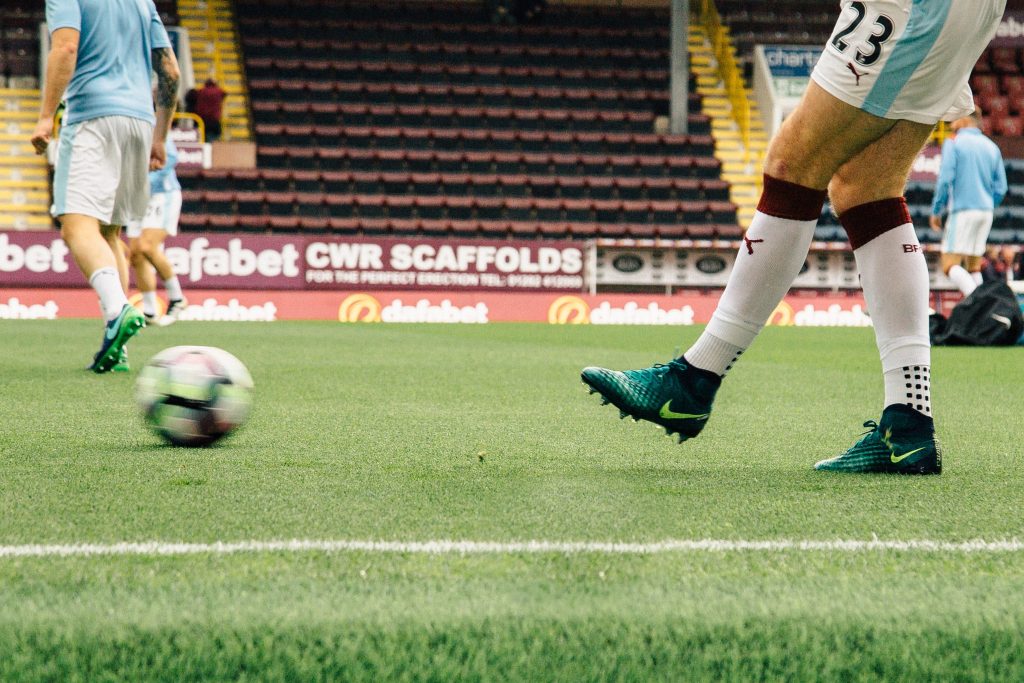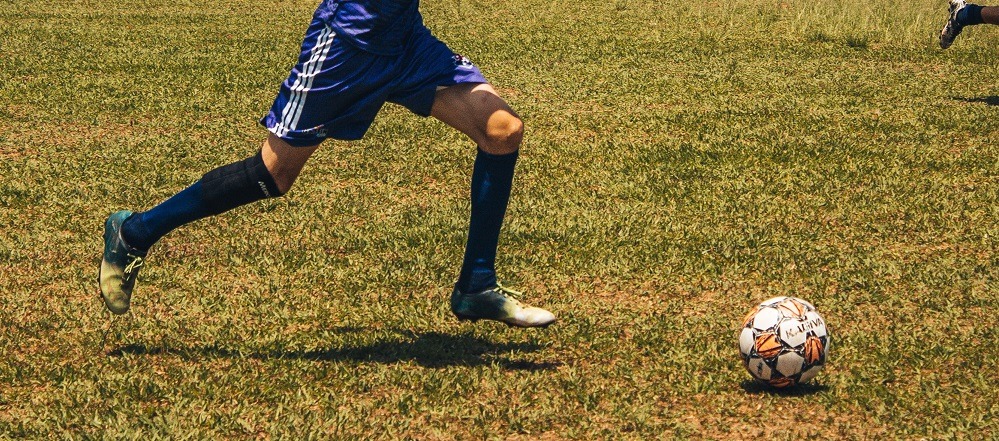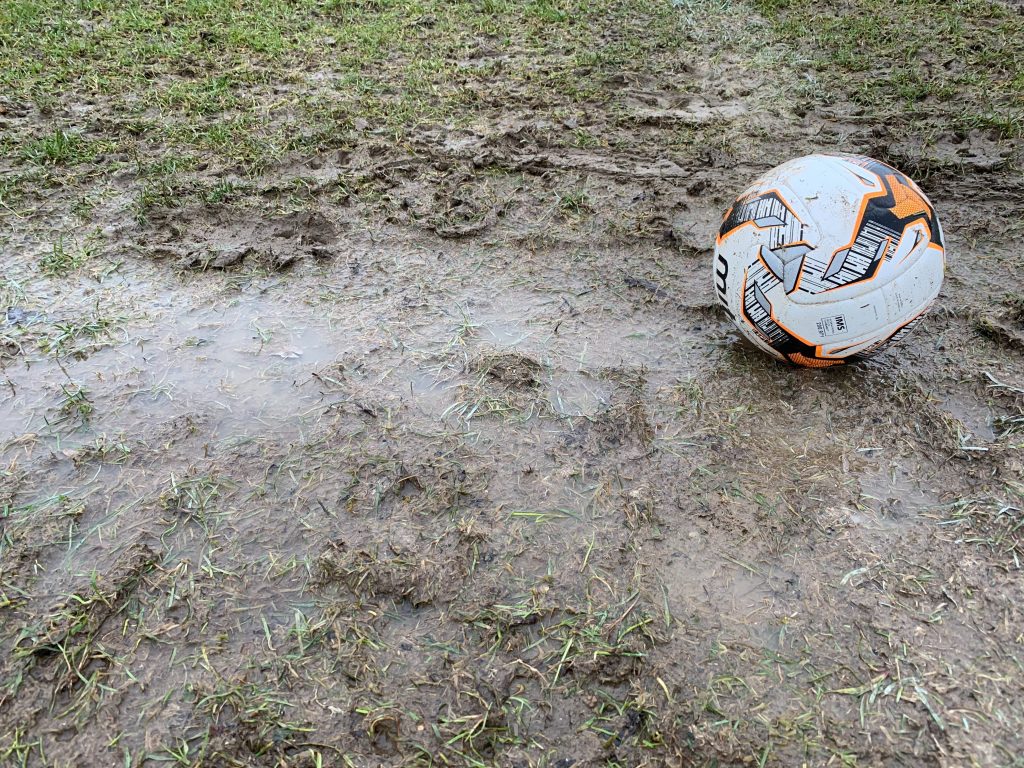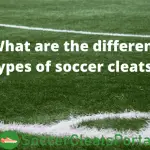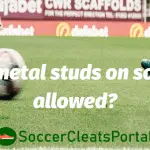One of the many things you must take into account when buying a new pair of soccer cleats is how they fare on different surfaces. Some soccer shoes are meant for soft and some for firm terrains. Buying the right pair will help you get the optimum performance while avoiding any injuries due to inappropriate footwear.
So what are the main differences between soft ground cleats and firm ground cleats? The differences are found in the construction of the soleplate. Soft ground cleats have lengthier metal removable studs, ideal for wet surfaces. On the other hand, FG cleats utilize shorter plastic molded studs, mainly used for more dry grass surfaces.
Because of these differences, these types of soccer shoes will behave differently on each playing surface. But first, let’s see which are the main differences between these two types of cleats.
What are the main differences between SG and FG soccer cleats?
SG – Soft Ground Soccer Cleats
This type of soccer shoe is primarily used on soft and slippery natural terrains. The best examples would be wet grass or mud.
The most unique feature of SG cleats is their studs. They are removable and the player can adjust their length depending on the condition of the surface.
The studs are usually between 1/2 and 3/5 inches long (1.27 – 1.53 centimeters) and can be made from either plastic or metal. These soft ground models will have studs that are placed widely apart. This prevents mud from accumulating mud between them.
Generally, there will usually be 2-4 studs below the heel and 4 in the front part of the sole.
A more sophisticated type is the SG-Pro soleplate type designed by Nike mainly for professionals as the name suggests. While SG cleats feature conical studs in this case we see a combination of the metal rounded cleats and the plastic blades studs found on many FG cleats. These cleats are designed to get not only the traction provided by the metal studs but also the aggressiveness that bladed studs have to offer.
FG – Firm Ground Soccer Cleats
These are meant to be used on natural grass terrains. The field should have a hard base and a dry surface.
Firm-ground cleats are universal shoes that are a great choice for beginners. The studs aren’t removable on these models, they are welded in the sole of the shoe. Most usually they’ll be made from plastic and the shape will be either rounded (conical studs) or triangular (bladed studs).
The studs of firm ground cleats are a little shorter than those in SG cleats as they do not need to penetrate that much in the dry surfaces that are meant to be used.
Generally, there are around 10-14 studs on the sole of the firm ground cleat. They are spread optimally through the bottom of the shoe to give more traction to the player.
On the firm ground category falls the mixed stud patterns like the FG-AG soleplate which are used on both artificial grass and natural grass surfaces.
In my article on what are the different types of soccer cleats, you can find more information about the different types of soccer cleats and the difference between conical and bladed studs.
Where to use each type of soccer cleat?
Soft ground soccer cleats will usually be used by professional soccer players.
They are most suited for natural grass that has a cushioned, wet base. Fields with a soft ground are well maintained, mowed, and watered. This means that soccer cleats penetrate deeper into the ground when compared to firm ground fields. Longer and adjustable studs will provide better traction on these terrains.
As for firm ground soccer cleats, they are meant to be used on natural grass fields too. There is one big difference though, the base of the pitch is hard with a dry playing surface.
The FG cleats can’t penetrate too deep into the ground here as the ground is too solid for that to happen.
Most amateur players play on firm ground surfaces. This type of terrain is most common because it’s much easier to maintain than soft ground fields.
Using SG Cleats on Firm Grounds
SG soccer cleats are meant to be used in specific circumstances.
We already mentioned that professional players use them on high-quality soccer fields, however, they can still be useful to amateurs on a rainy day. You’ll sometimes come across muddy and soft soccer pitches in amateur leagues. This can happen as a result of excessive watering or rain. These cleats can be really helpful in gaining some traction in these situations.
However, SG soccer cleats should only be used on soft grounds. If you use SG cleats on firm ground, you can easily get serious injuries. You can hurt the joints on your legs and feet while making sharp turns or pivoting.
It’s also very dangerous for your knees to play on artificial grass or turf in these models. Besides that, you can easily destroy these surfaces if you are playing and running with metal studs.
Apart from the health and traction issues, many amateur leagues have rules that will not let you use metal studs when playing in their games. I have written a more detailed article regarding the regulation of metal studs in soccer games.
If you buy a pair of SG soccer cleats you should use them exclusively on soft grounds.
Using FG Cleats on Soft Grounds
Most amateur players will have to play on firm ground surfaces. For these, they need a pair of FG soccer cleats. A great thing about FG cleats is that they’re very versatile. You should be able to play on almost all terrains without much trouble. They can be used on both firm and soft grounds. Also when the soccer pitch is not that well maintained and the grass is a little bit longer than expected playing FG cleats will not be a problem.
The only issue that you will have with FG cleats is when you have to play on very wet or water-logged pitches. An FG soleplate will feature more studs, thus the amount of mud that is going to be accumulated in the bottom of the shoe is significantly higher. You will have a hard time running and playing in those conditions. Also, your FG cleats will be much more slippery on such surfaces.
In some cases you can even use FG cleats on artificial grass surfaces, however, you must be very careful when considering this. Some models of FG soccer cleats won’t be safe for playing on artificial grass, especially those with only bladed studs.
Needless to say that you should not use any of FG or SG cleats an artificial turf or hard wooden or concrete surfaces.
Final thoughts
All in all, if you aren’t a professional player, there won’t be many occasions when you’ll need to use SG soccer cleats. Sticking with FG cleats should be sufficient for amateur competitions.
Having SG cleats can be useful on some occasions though, it’s just important to take into account that you won’t be using them very often.
